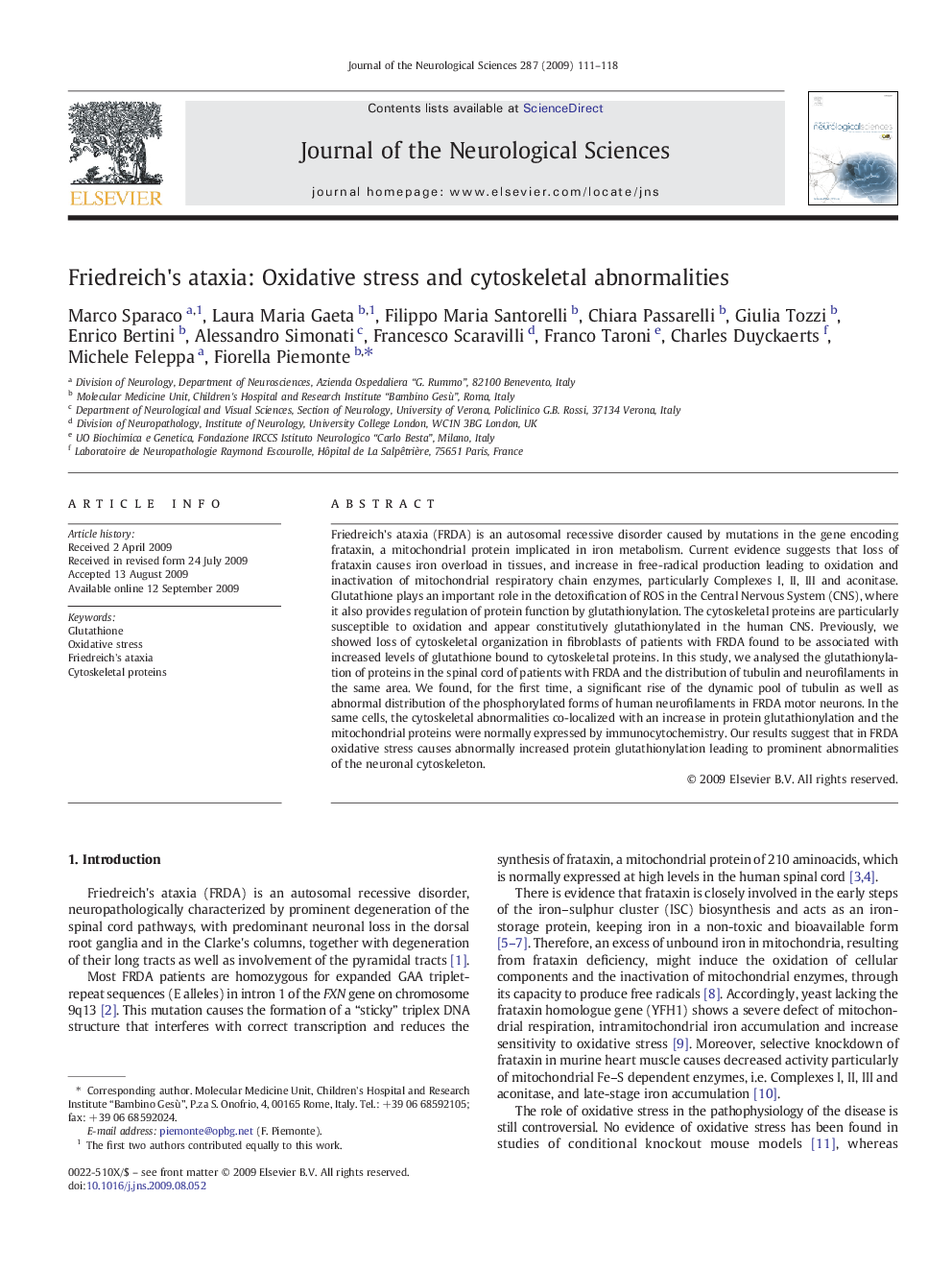| Article ID | Journal | Published Year | Pages | File Type |
|---|---|---|---|---|
| 1914811 | Journal of the Neurological Sciences | 2009 | 8 Pages |
Friedreich's ataxia (FRDA) is an autosomal recessive disorder caused by mutations in the gene encoding frataxin, a mitochondrial protein implicated in iron metabolism. Current evidence suggests that loss of frataxin causes iron overload in tissues, and increase in free-radical production leading to oxidation and inactivation of mitochondrial respiratory chain enzymes, particularly Complexes I, II, III and aconitase. Glutathione plays an important role in the detoxification of ROS in the Central Nervous System (CNS), where it also provides regulation of protein function by glutathionylation. The cytoskeletal proteins are particularly susceptible to oxidation and appear constitutively glutathionylated in the human CNS. Previously, we showed loss of cytoskeletal organization in fibroblasts of patients with FRDA found to be associated with increased levels of glutathione bound to cytoskeletal proteins. In this study, we analysed the glutathionylation of proteins in the spinal cord of patients with FRDA and the distribution of tubulin and neurofilaments in the same area. We found, for the first time, a significant rise of the dynamic pool of tubulin as well as abnormal distribution of the phosphorylated forms of human neurofilaments in FRDA motor neurons. In the same cells, the cytoskeletal abnormalities co-localized with an increase in protein glutathionylation and the mitochondrial proteins were normally expressed by immunocytochemistry. Our results suggest that in FRDA oxidative stress causes abnormally increased protein glutathionylation leading to prominent abnormalities of the neuronal cytoskeleton.
